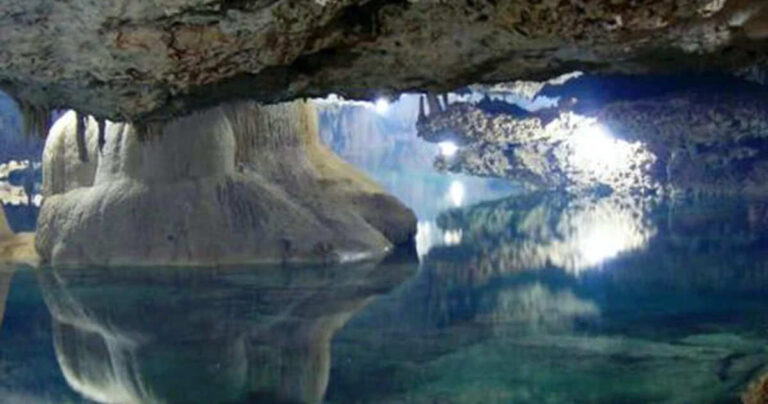Imagine the vast expanse of the world’s oceans. Now, picture an underwater realm three times that size, not across the globe’s surface, but tucked away deep beneath it, at a depth of 700 kilometers. This isn’t the plot of a sci-fi novel but the startling discovery made by a team of scientists, unraveling the mysteries of our planet’s water origins.
Unveiling Earth’s Hidden Hydrosphere
The quest to pinpoint the origins of Earth’s water has led researchers to a monumental find—a colossal ocean ensconced within the Earth’s mantle, over 700 kilometers below the surface. This hidden ocean, concealed within a blue rock known as ringwoodite, challenges our understanding of where Earth’s water came from. The size of this subterranean sea is so vast that it triples the volume of all the planet’s surface oceans combined.
This discovery not only fascinates with its scale but also proposes a new theory about Earth’s water cycle. It suggests that instead of arriving via comet impacts, as some theories have posited, Earth’s oceans may have slowly seeped out from its very core.
The Science Behind The Discovery

Steven Jacobsen, a researcher at Northwestern University in Illinois and the lead author of the study, says, “This is tangible evidence that water on Earth came from within.” According to Jacobsen, this hidden reservoir could also explain why the size of the world’s oceans has remained consistent over millions of years.
To unearth this underground ocean, researchers employed an array of 2000 seismographs across the United States, analyzing seismic waves from over 500 earthquakes. These waves, which travel through Earth’s inner layers, including its core, slow down when passing through wet rock, allowing scientists to deduce the presence of this vast water deposit.
Earth’s Water Cycle Reimagined
The presence of water within the Earth’s mantle, sweating along the edges between grains of rock, could reshape our understanding of the planet’s water cycle. Jacobsen points out the significance of this reservoir: without it, the water would be on the Earth’s surface, and mountaintops might be the only land visible.
Now, with this groundbreaking discovery, researchers are keen on gathering more seismic data from around the world to determine if this mantle melting is a common occurrence. Their findings could revolutionize our understanding of the water cycle on Earth, offering new insights into one of our planet’s most fundamental processes.






